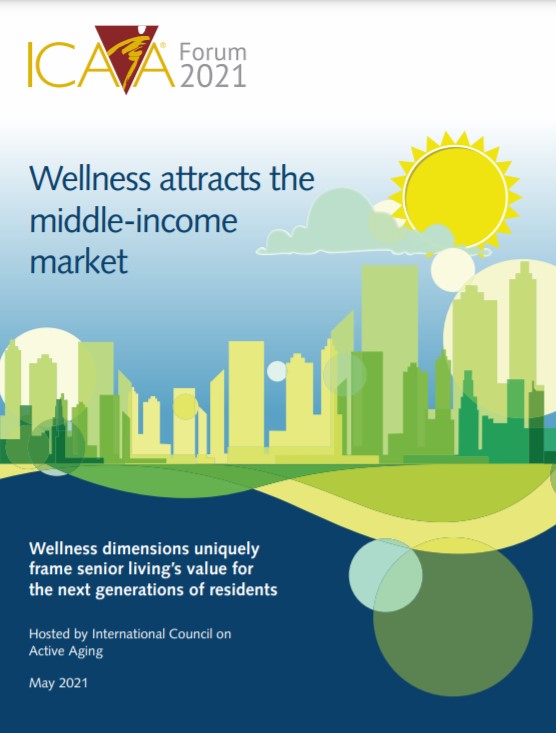
Want to attract middle-income older adults? Emphasize lifestyle opportunities and comfortable residences, and allow residents and others who use community amenities to be able to choose from a menu of services.
Those are some of the suggestions for a new model of senior living, aiming to revolve around lifestyle experiences while being cost-effective and sustainable, laid out in a new conceptual framework published by the International Council on Active Aging.
The report released Tuesday — “Wellness attracts the middle-income market” — is a result of a discussion forum in May with more than 70 industry thought leaders from independent living, assisted living and memory care operators.
Faced with the reality of the financial resources, or lack thereof, of older adults, industry leaders and investors already were looking at ways to make senior living more affordable, within acceptable profit margins, for those not able to pay for current senior living offerings but with too much income to qualify for Medicaid. The pandemic, according to the report, created an opportunity to rebuild a positive view of senior living by creating a comfortable, enriching environment that prioritizes a wellness lifestyle. The new middle-income community, ICAA Founder and CEO Colin Milner said, is intended to answer the need for social connections.
“The social isolation that occurred during the pandemic gave people a lot of time to think about what they value and how they want to live,” Milner said. “Like everyone else, older adults became acutely aware of how much they missed getting together with friends and family or attending in-person events. Isolation also forced many of us to recognize how our lifestyles affect our mental and physical health.”
A wellness-centered community for the middle-income market focuses on value, choice and autonomy, according to the report. That means a reduced emphasis on elegance, an increase in lifestyle options, creative use of space, reduced staffing and reimagined dining.
The concept also includes creating synergies with the larger community, resulting in a revenue stream for a community from nonresidents paying to access a restaurant, amenity or program, but also making the senior living property an extension of the larger community.
“The executives who discussed the middle-income market opportunities recognized that they cannot return to business-as-usual, and that lifestyle and wellness offerings are expected by the boomer and middle-income populations,” Milner said. “Wellness delivers the brand promise.”
Practically speaking, according to the report, middle-market residents may be younger and healthier than people who enter communities in their 80s because of health or ADL needs, so telehealth technology could replace nursing care and assistance, or residents will be able to arrange for assistance in their units, paying privately for care they need.
Regarding staffing, new roles will be required, and the wellness/lifestyle team would need to be optimized to support residents and others using amenities. Technology such as smart appliances, robots for deliveries or communication vehicles could replace some staff members.




